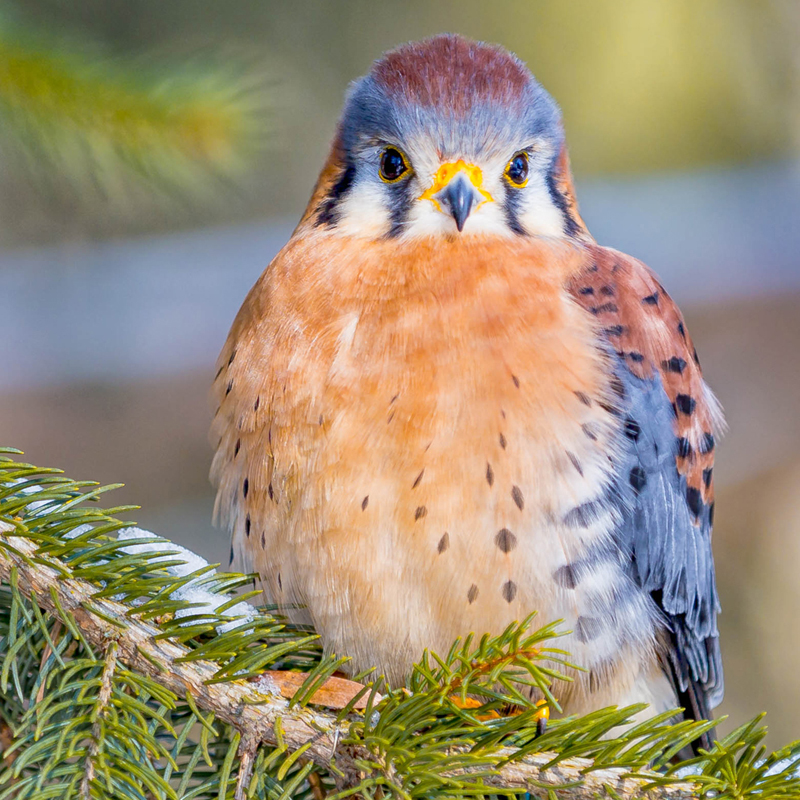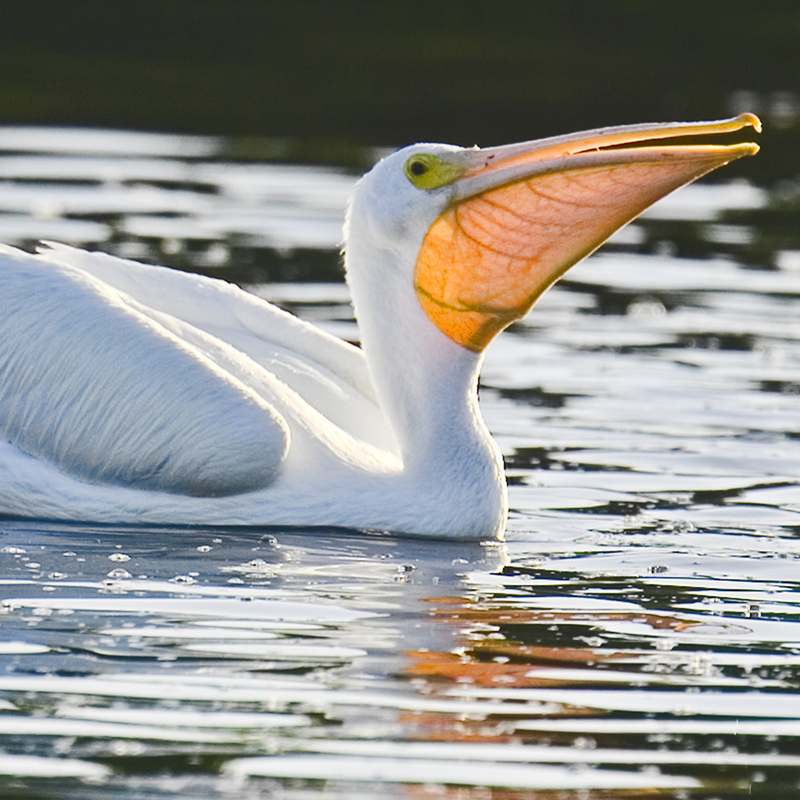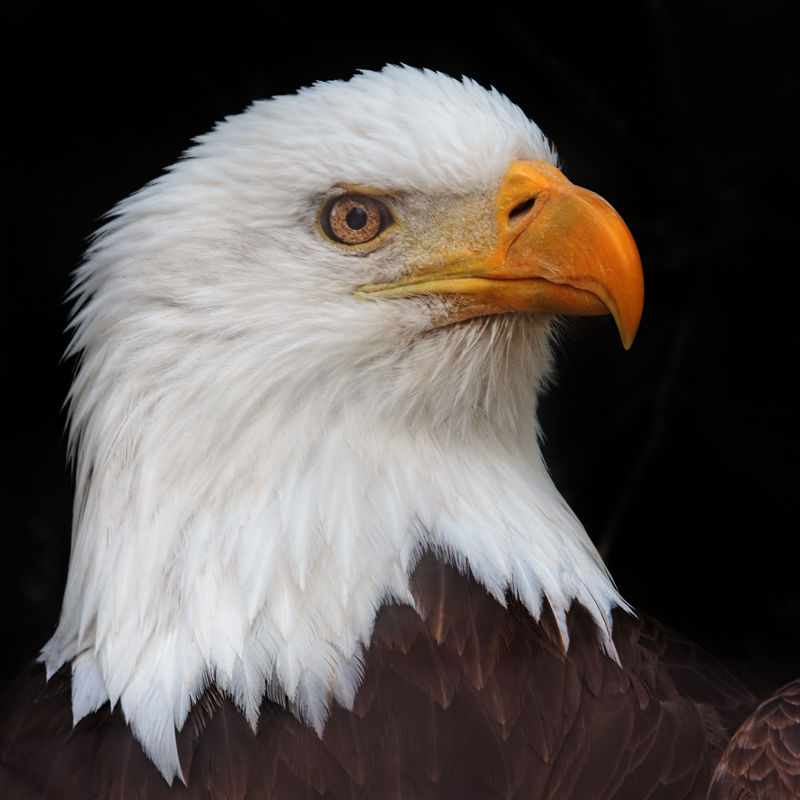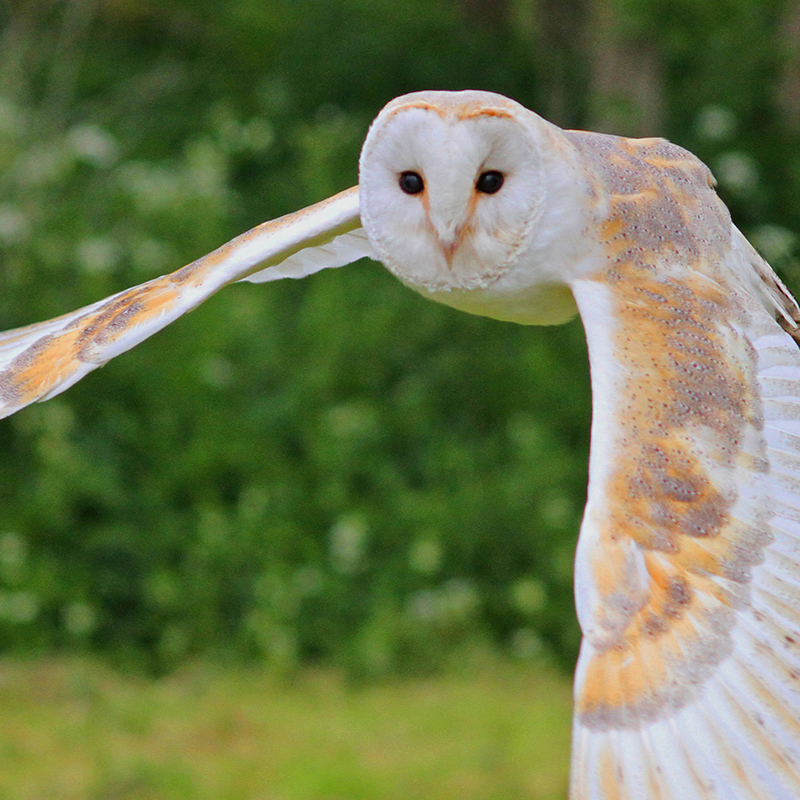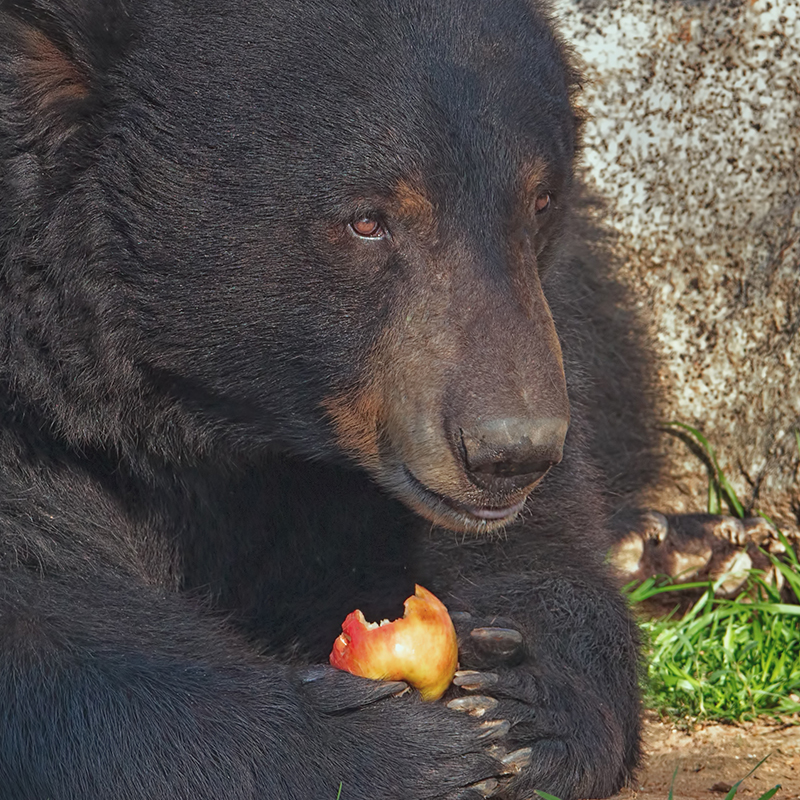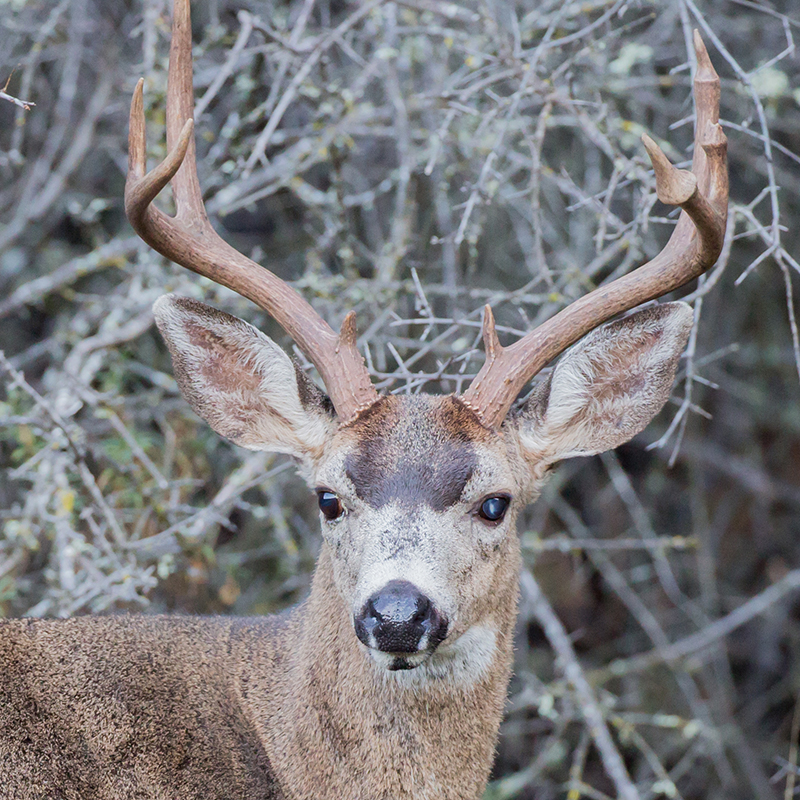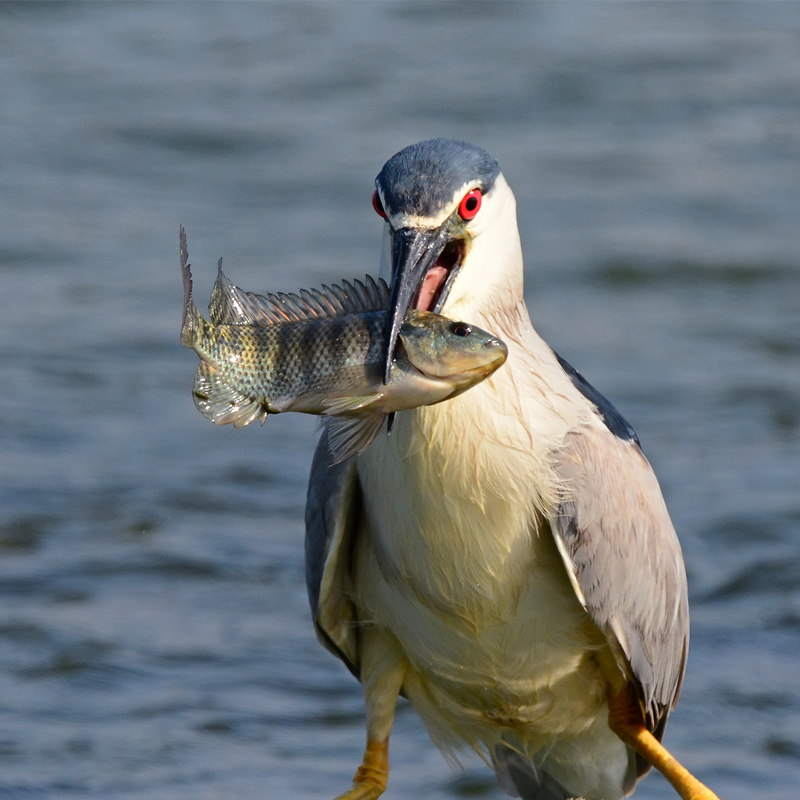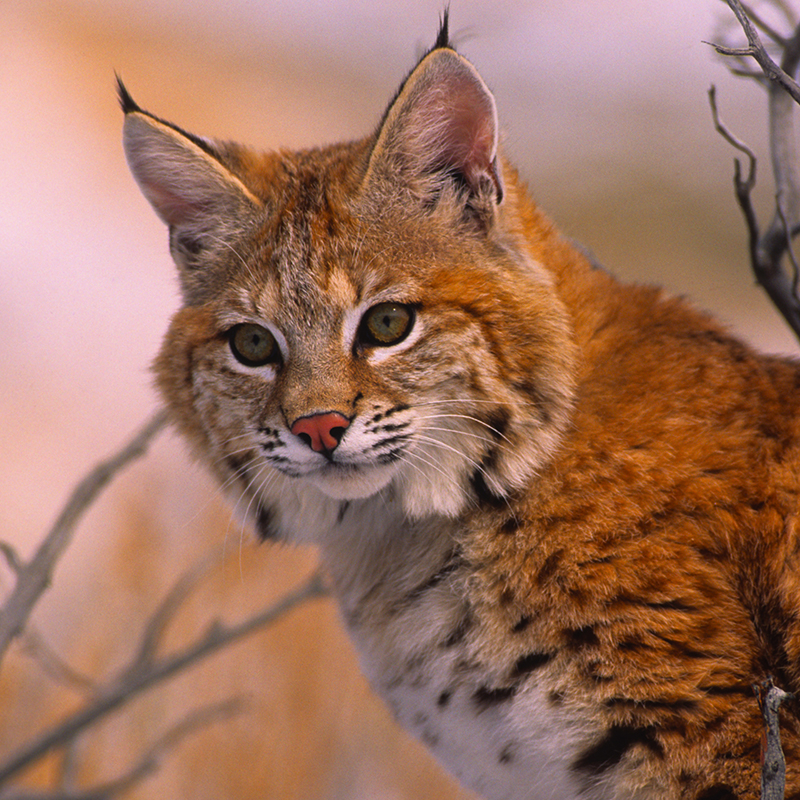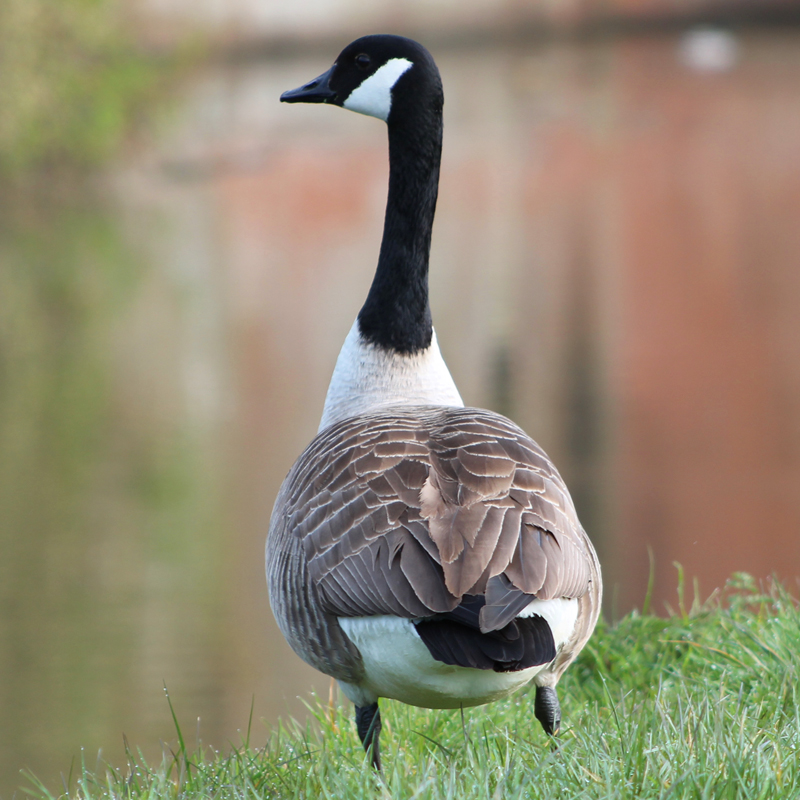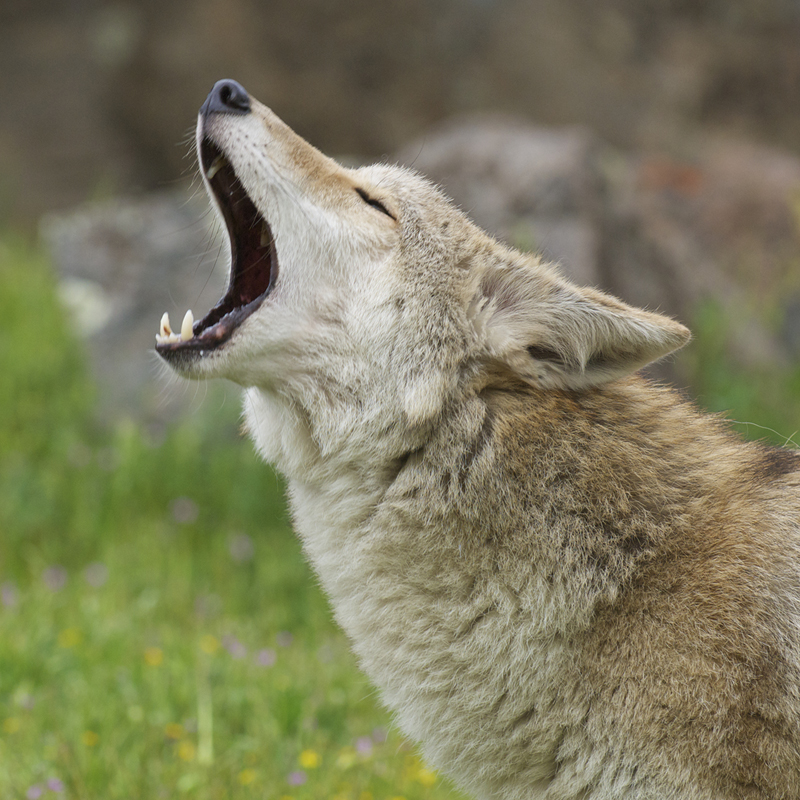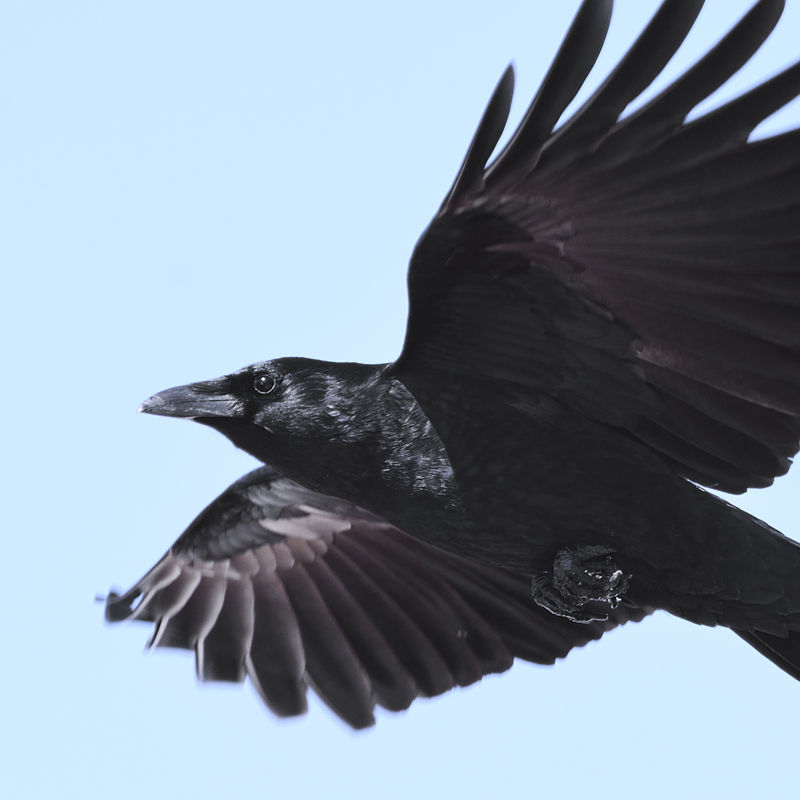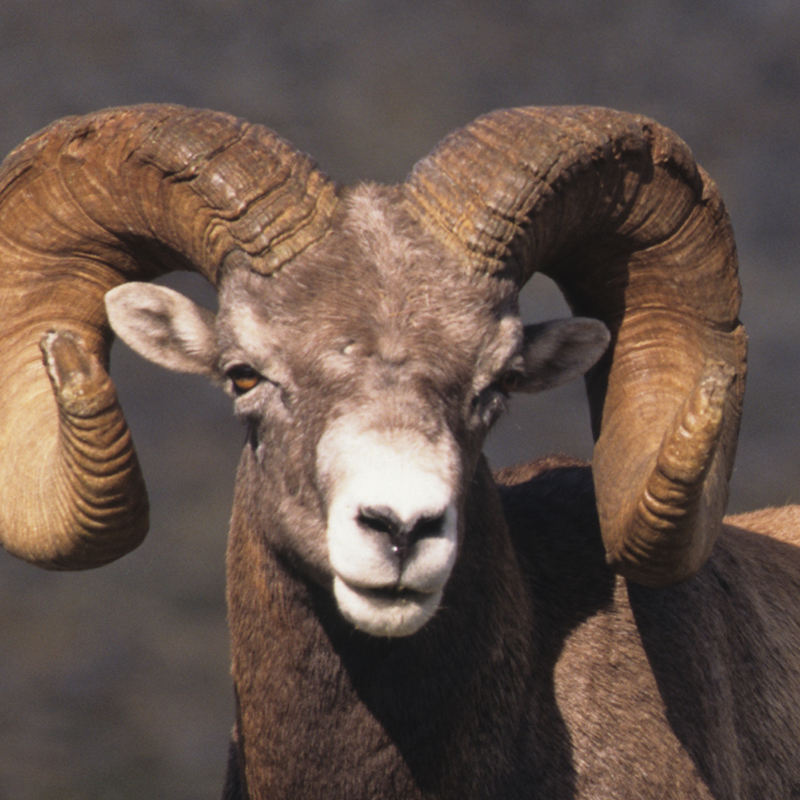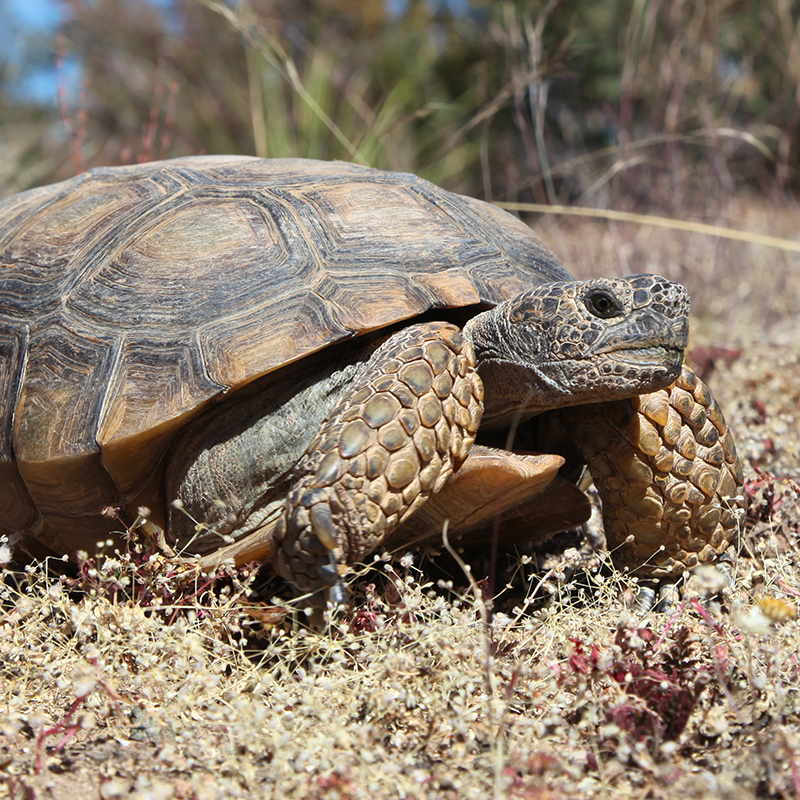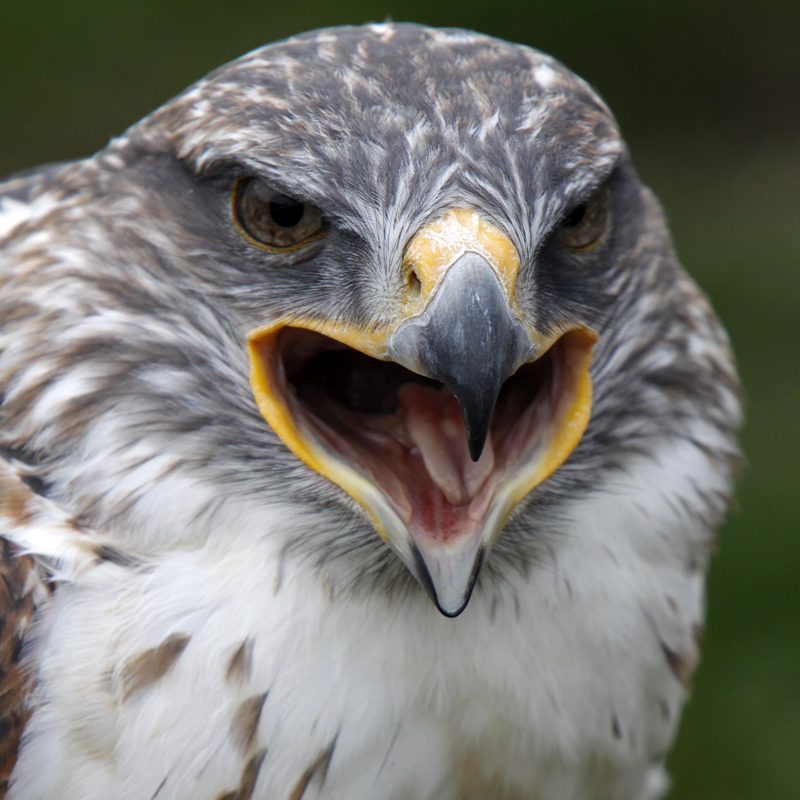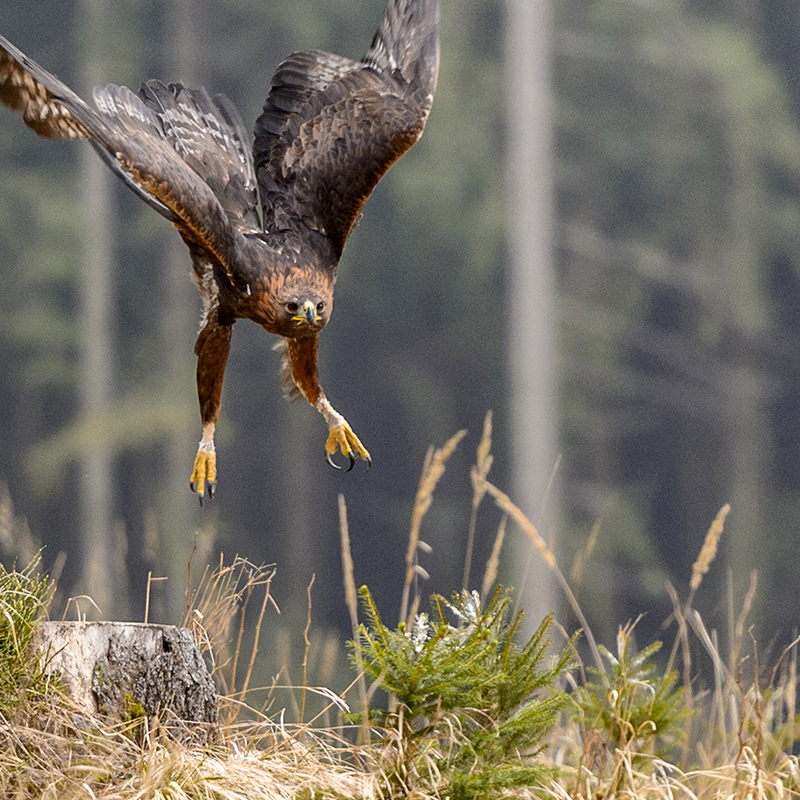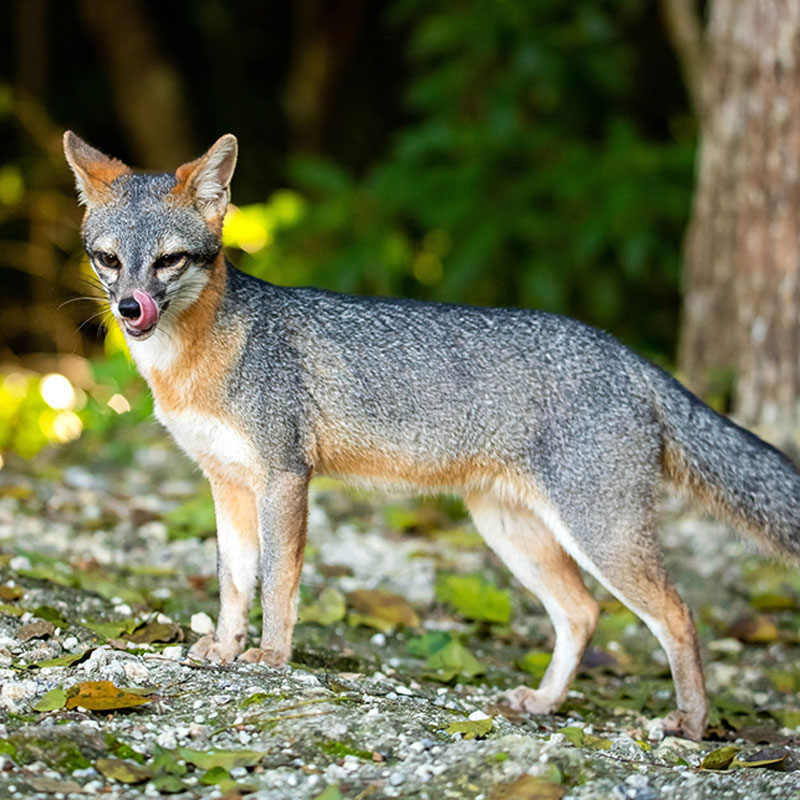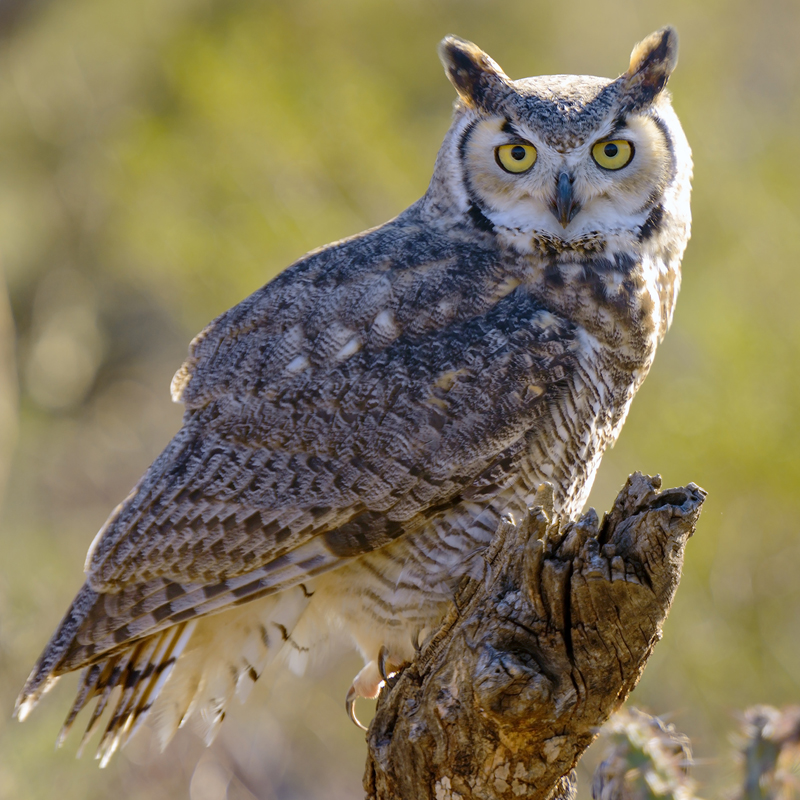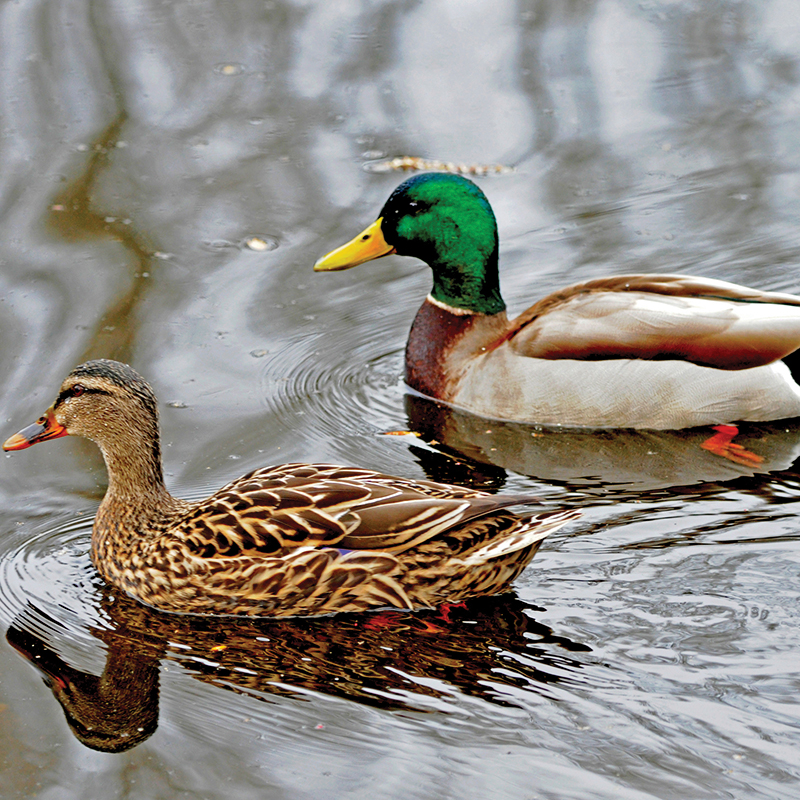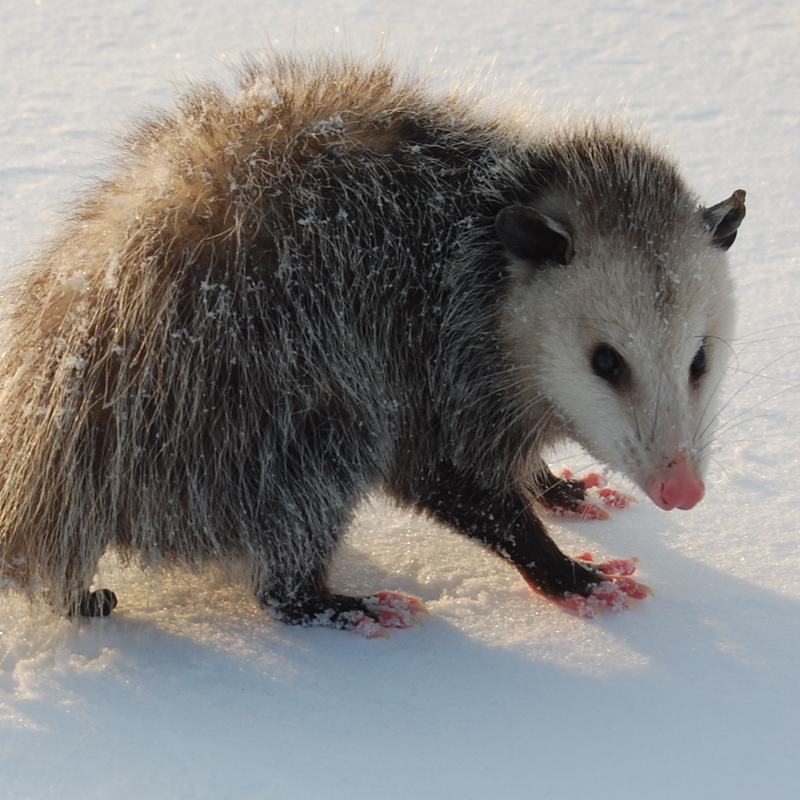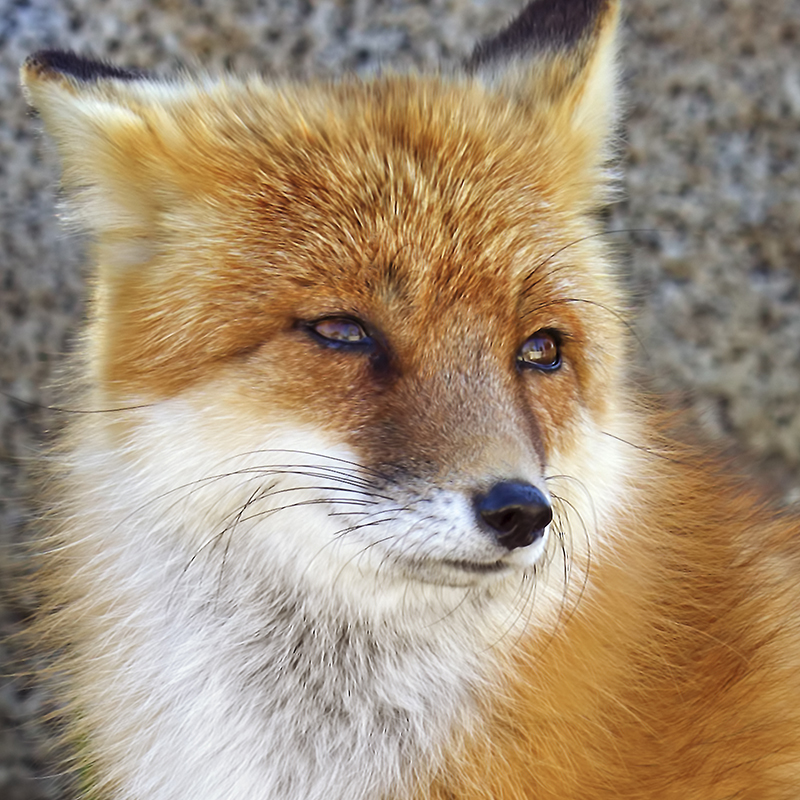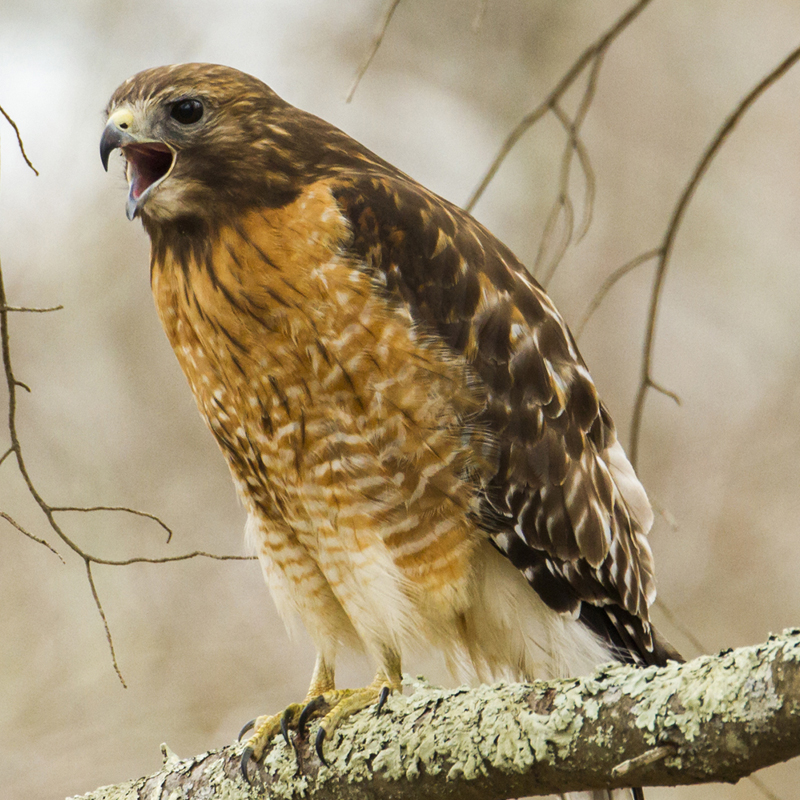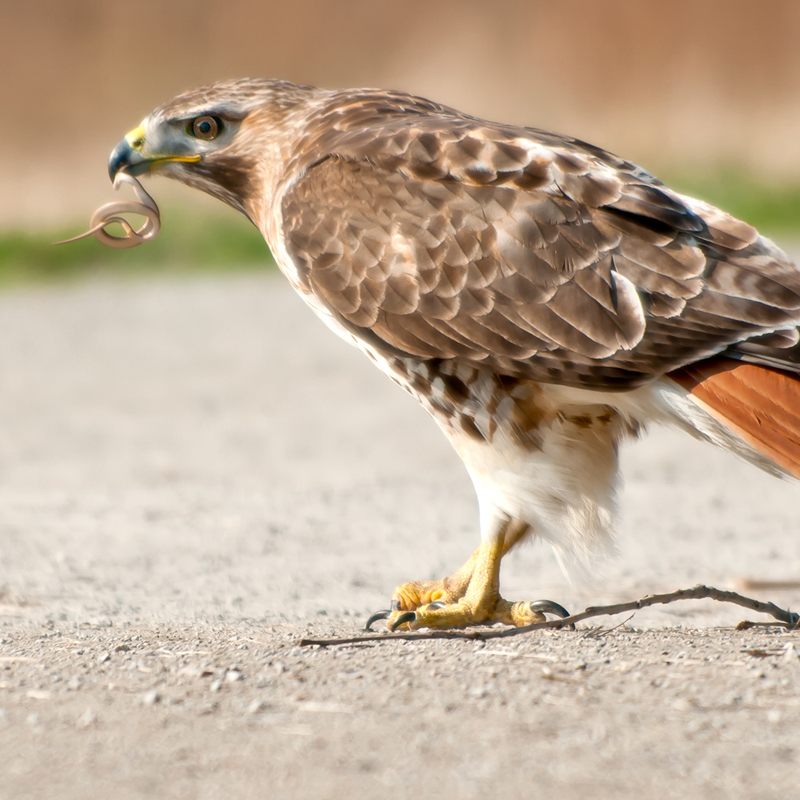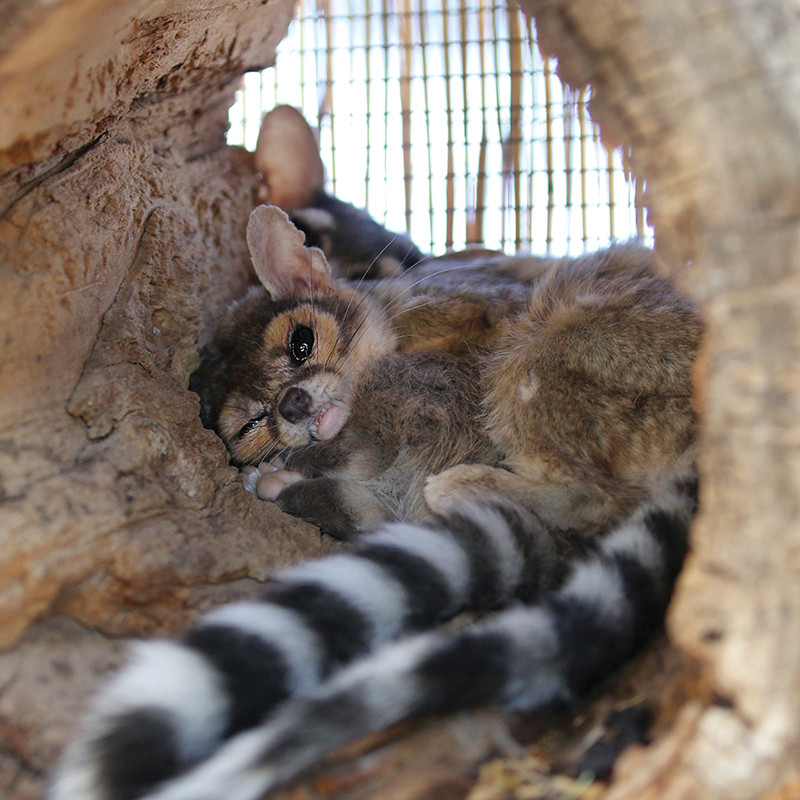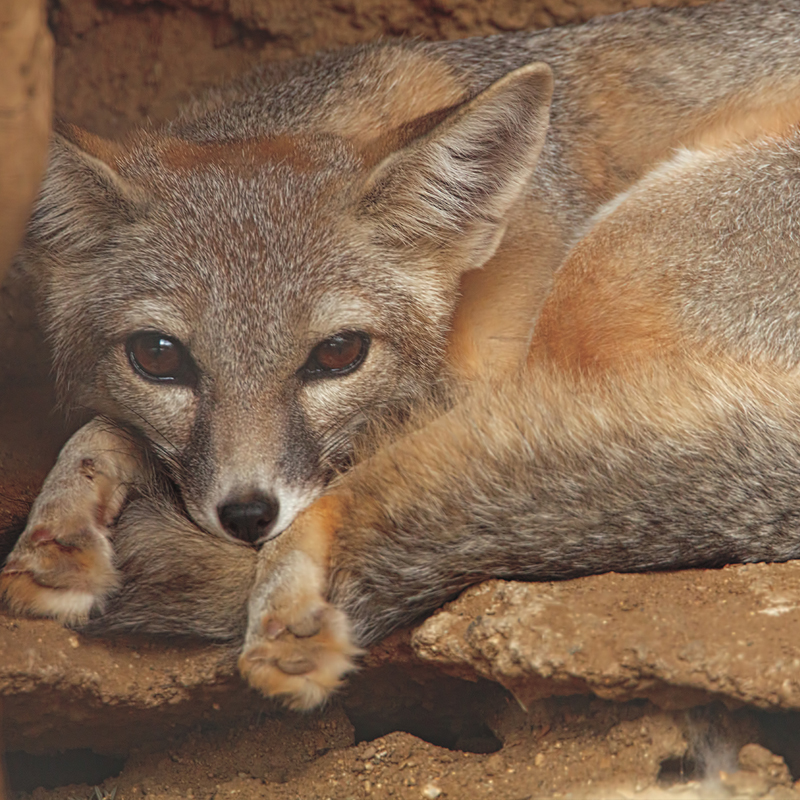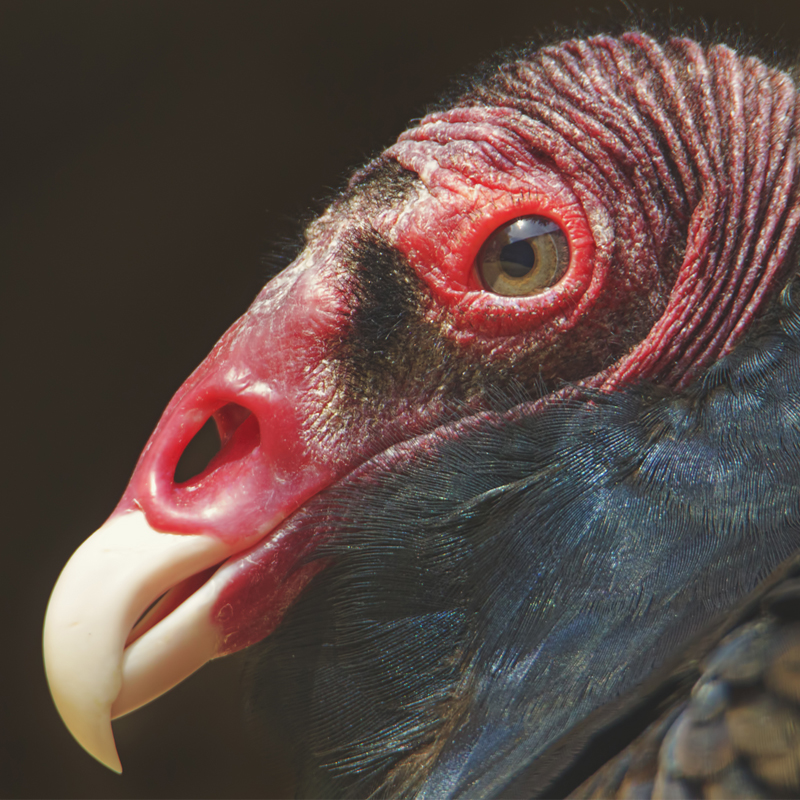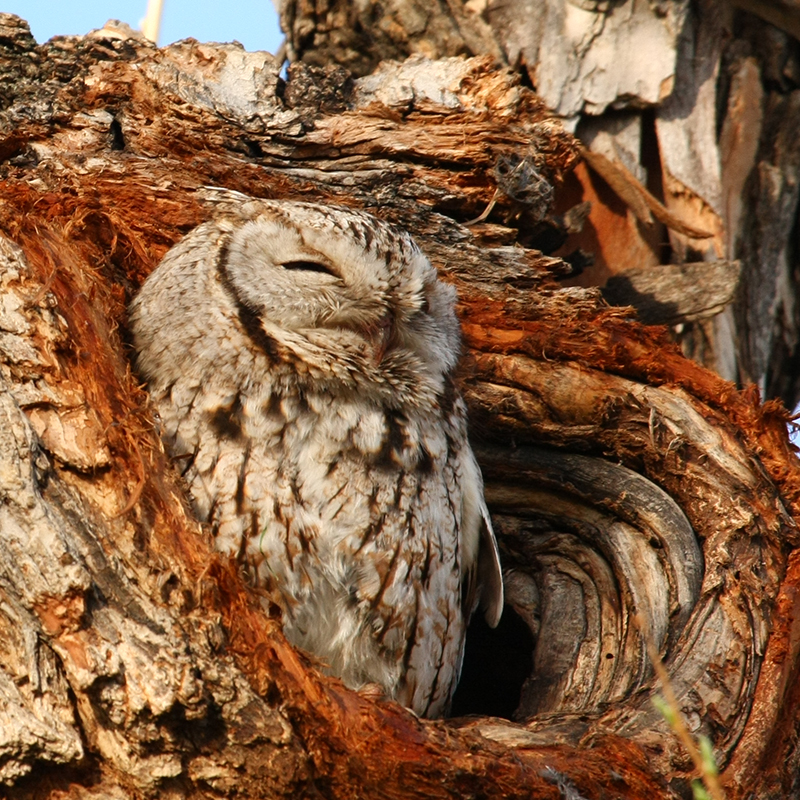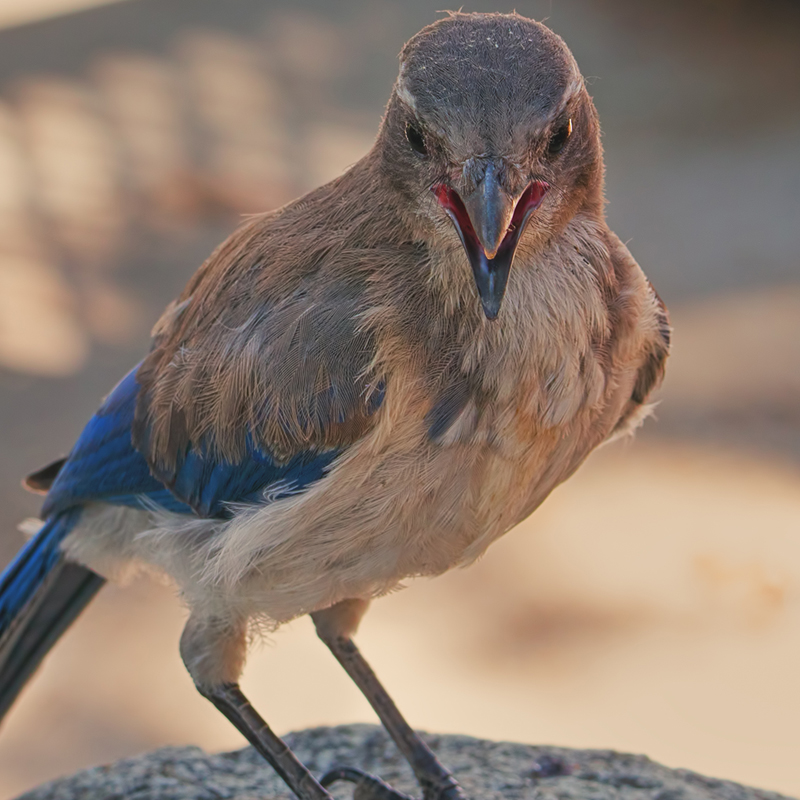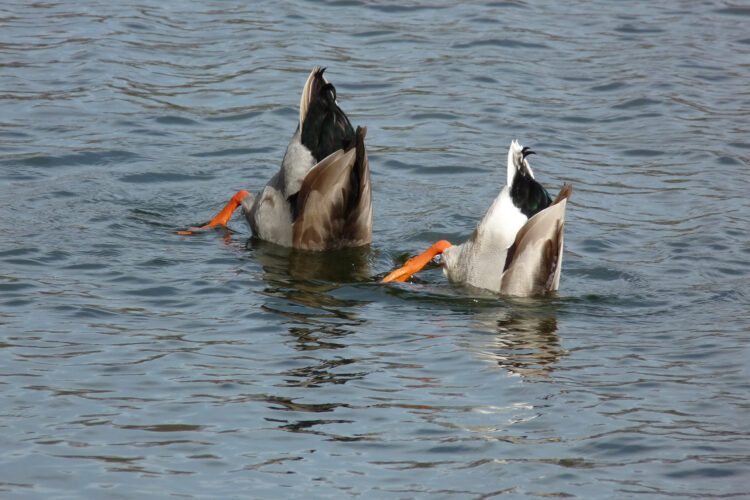
Mallards are the most common and recognized duck in North America, with the male’s beautiful shiny green feathers on his head and neck. The females are a mottled light brown and have an orange bill with black markings.
Both males and females have matching blue speculum on their wings and like to live in shallow freshwater areas where shelter and food are plentiful.
Mallards are dabbling ducks. They can often be seen with their “bottoms up” when feeding. The serrated edges of their flat-rounded bill sieve out seeds, aquatic plants, insects, larvae, fish eggs, tadpoles, algae, and snails.
The female lays an average of 8 eggs in a loosely built nest on the ground. Laid all in one day, the female alone incubates the eggs. The average incubation time is 28 days and she will turn each one every day. The precocial ducklings are able to follow the female into the water within hours after hatching. They will happily become non-migratory if food and shelter are available year round.

